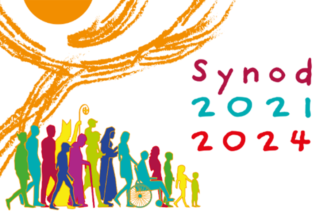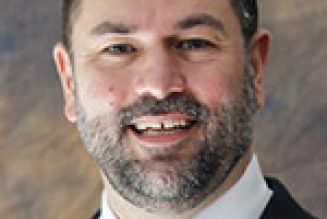By Dr. Jeff Mirus ( bio – articles – email ) | Jun 14, 2024
It is one of the odd—but in the long run potentially fruitful—features of the current pontificate that a great emphasis on synodality in theory has emerged under a Pope who tends to act unilaterally. This is not particularly surprising since we humans so often tend towards failure when it comes to living out in practice the principles we hold in theory. This characteristic is expressed most clearly in Proverbs 24:16, which notes that “the just man falls seven times a day” (though of course he “rises up again”). But it is seen not just in our simple weaknesses, but in our very human inconsistency, for we often simply do not practice what we preach. Moreover, it is almost axiomatic that what annoys us most in another is precisely the kind of bad behavior we do not recognize in ourselves.
Nonetheless, Pope Francis has consistently advocated a more synodal Church, even if “synodality” has not been clearly defined, and even if synodality will, in the West at least, almost always be first interpreted as something very like democracy, making the concept fair game for those who want to change the perennial teachings of the Church Christ founded. Nonetheless, the concept of synodality can bear very good fruit if it is properly understood not as democracy but as each Catholic actively fulfilling the obligations of his or her state in life in a harmonious participation in the full life of the Church.
This concept bears upon a great many things. The root meaning of the word “synodality” is “a way together”. As manifested in Church history, the concept has expressed itself in “synods”, that is, in meetings of the bishops of particular regions to address the spiritual problems of those regions. This has offered the opportunity for a joint exercise of the episcopal office of teaching, ruling and sanctifying, in addressing the particular spiritual deficiencies in a region, especially problems arising from specific errors which were leading people astray and creating unrest among the faithful. By exercising their episcopal authority in this “synodal” way, the bishops of a region could add weight to their decisions, especially if it became necessary to combat errors of one or more particularly wayward bishops.
But the first Church council—the Council of Jerusalem held roughly in 50 AD—was a good example of synodality as applied more generally in the governance of the whole Church. Being not regional but universal in scope, it included the pre-eminent participation of Peter, the head of the whole Church. But even in the more common regional synods, a pope could intervene to highlight needs or safeguard the region against error. And from the first days of the Church (as several Church fathers would later attest), it was understood that to fail to remain in communion with the successor of Peter in the Church of Rome was to cease to be part of the living Church of Christ.
Synodality today
The concept of synodality has been expanded today in a number of fruitful ways that run counter to the broken branch theories and practices by which we see the synodal effort used to transfer the locus of authority to those who are discontented with Catholic teaching. We might call this the Saul Alinsky approach to synodality—that is, the effort to use the concept to transfer ultimate authority to various powerful movements from below which are really in rebellion against Christ. But this is not what synodality means at all.
Moreover, the Orthodox Churches, in the very process of over-emphasizing what began as a legitimate understanding of synodality, have unfortunately abandoned the essential role of the successor of Peter as a guarantee that the local churches would not fall into error and separate from the universal church. (Sadly, for a variety of historical reasons, this is exactly what has happened.) But the Orthodox (and the the once-Orthodox Eastern churches which have returned to union with Rome) do have a keener understanding of synodality as it can operate at the episcopal level.
Note that this is not at all the same thing as national or regional episcopal conferences, which do involve periodic meetings of the bishops in a region, but which also have permanent lives of their own in developing and carrying out various central initiatives in each region, many of which (too many?) are political in nature. Even among the bishops themselves, these ongoing activities are perceived to range from things that help them in their work to things that hamper them. But the ongoing work of the episcopal conferences is not particularly synodal in nature. It is essentially bureaucratic in nature, a continuous role which may not always be helpful.
In our time, the concept of synodality has been expanded from its fundamentally regional episcopal origins to include the entire body of the faithful, and of course this will inevitably be interpreted in the West as the belated arrival of “democracy” to the Church—especially as so many contemporary Churchmen seem to regard democracy as essential to good governance. But that is not what synodality means at all. In emphasizing a “synodal” approach or, more literally, a Catholic “way together”, the Church is really (if sometimes unwittingly) recalling St. Paul’s understanding of the Church as the Body of Christ, in which each and every member has significant responsibilities—in accordance with his role and office within the one Body.
All are not the head just as all are not feet and hands. And some precious members, being less dignified, must be appropriately covered.
Firing on all cylinders
This is why I describe a proper concept of synodality as the Church firing on all cylinders. That’s a modern and mechanistic image, of course, but despite this deficiency it implies that the Church runs most smoothly when each member understands his or her proper role and assumes the responsibilities proper to that role in obedience and service to Christ the head—who in turn is represented in the universal Church by the successor of Peter, and in each local church by the bishop. The best exercise of all these closely-related responsibilities is effected first through sound teaching and guidance from the top, and second through sound action and feedback from below, all in a prayerfully collaborative spirit which exemplifies complete fidelity to Christ in the Church He established for our salvation.
In the modern period, the Church gradually lapsed into a sort of corporate model of operation with the Pope as CEO and the bishops as branch managers. Thus bishops too often limited themselves to the implementation of Rome’s directives, and priests often viewed the responsibilities of the faithful as summarized by the expression “pay, pray, and obey”. The Church in the West has matured significantly beyond these attitudes, at least wherever there has been a vigorous response to the crisis of Faith which gripped the Western world in the twentieth century. But Catholics are still living in crisis because of the constant spread of false ideas and, paradoxically, the now common failure to discipline those within the Church who more or less deliberately undermine not only the Church but any effective faith in Christ, particularly when it comes to Christian morality.
Therefore, we still have a long way to go, and it is easy to see “synodality” as both a solution to and an exacerbation of the problem. The greatest danger in the synodal processes called forth by Pope Francis, again, is the Western politicization of the process in favor of relativism—the dominant culture’s endless, anti-collaborative and fundamentally unfaithful attempt to use the idea of “synodality” and the various “synodal” planning sessions to increase the power of those who are either seriously confused or in deliberate rebellion against Christ and the Church.
It is just this that must be “gotten through” with sound Petrine and episcopal guidance before the Church can indeed “fire on all cylinders”, operating through her members at every level in the service of Christ. Of course, in every era, both sin and the characteristics of various human cultures interfere with our understanding of this process, which must be continuously renewed. But in this sense, a more “synodal” Church is a Church in which all members recognize Christ as the Way, the Truth and the Life, in which all members understand that Christ is most perfectly present to us through the Church He established, and in which each member assumes his own proper responsibility as a member of that same Church.
This is the goal, as it has always been the goal, and whatever temporary mechanisms may be put in place to help us to achieve the goal, there really is no other Catholic “synodal way”.
Sound Off! CatholicCulture.org supporters weigh in.
All comments are moderated. To lighten our editing burden, only current donors are allowed to Sound Off. If you are a current donor, log in to see the comment form; otherwise please support our work, and Sound Off!

There are no comments yet for this item.








